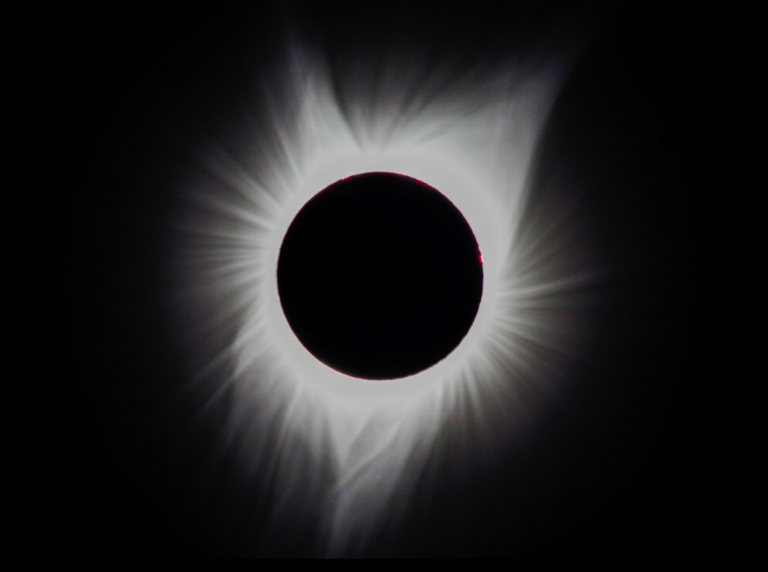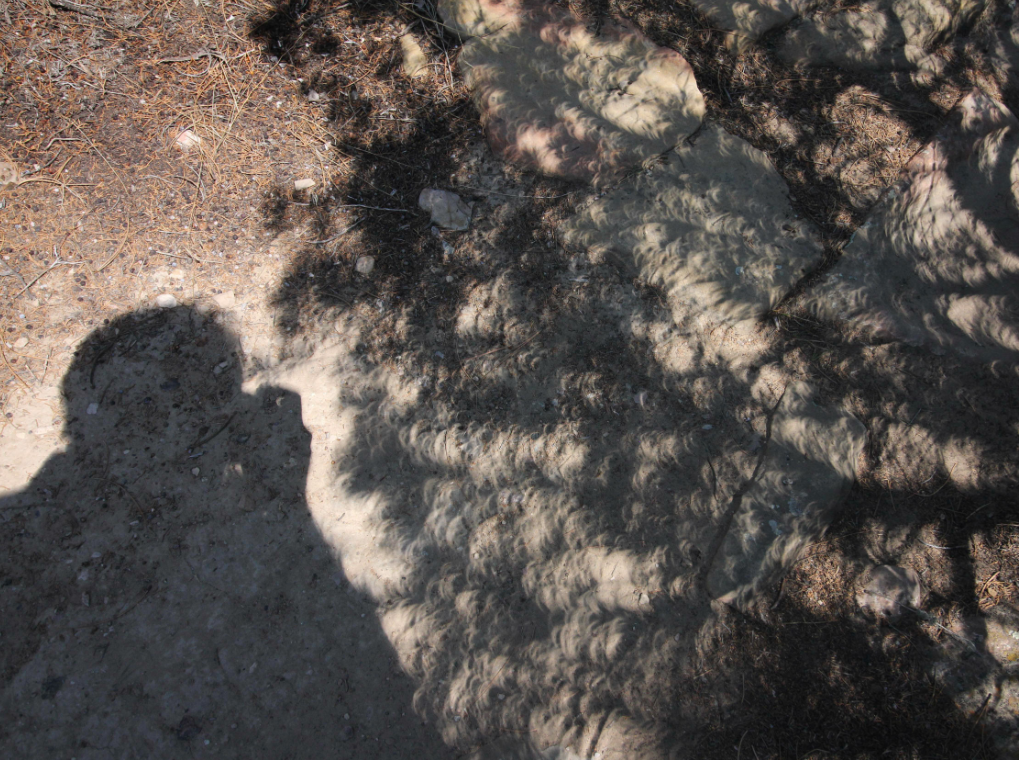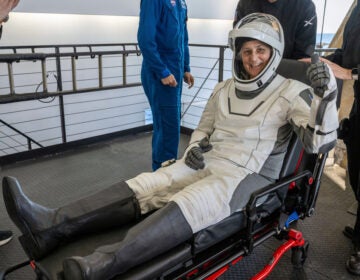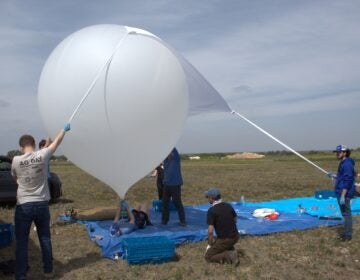Simple tips to safely photograph the solar eclipse with your cellphone

The moment of totality during a solar eclipse in Glendo, Wyo., on Aug. 21, 2017. (John T. Meader)
If you plan to check out Monday’s total solar eclipse and the only camera you own is one that doubles as a phone, with a little preparation (and precaution) you might still be able to get some relatively good shots.
“It all depends on how much effort one wants to put into it,” says Sean Walker, an associate editor with Sky & Telescope magazine. For starters, you’ll need to wear eclipse glasses or similar protective eye gear while aiming your camera or even just observing the eclipse.
In the U.S., the path of totality for the best views stretches from southern Texas, crossing through the South and Midwest and into the Northeast before hitting Maine. But anyone in the continental U.S. can catch at least a partial eclipse, weather permitting.
Don’t look up — look down!
It will be possible to capture interesting images even if you don’t live in, or travel to, that swath where the moon will appear to nearly perfectly cover the sun. “If you’re within several hundred miles of the path of totality at maximum eclipse time,” Walker says, “the spaces between leaves on trees and basically anything that makes a pinhole will project an image of the crescent sun on the ground or on a wall … depending on how high the sun is at the time.”

That’s a photo that’s “all easy peasy with a cellphone,” says John Meader, director of Northern Stars Planetarium and Educational Services in Fairfield, Maine. Another option is to shoot the environment around you as it is darkened as the eclipse reaches totality. “Maybe a before and during shot of the same scene to capture the changing light levels,” he suggests.
Feeling more ambitious? A tripod is a must
If you’re determined to take a direct photo of the eclipse, you will need a bit more preparation.
The key to getting a good photo is “a simple tripod that will hold your cellphone stable so you can take pictures and not wiggle around during the totality,” Walker says.
Even so, hitting the shutter button by hand could cause unwanted jiggle. To avoid that, consider a Bluetooth trigger. Or set the camera to “timer mode,” giving it a few seconds to settle before it snaps the picture.
Randall Benton, a freelance photographer with a passion for solar eclipses, says the other option is to shoot video “just as the sun is going dark.” Although the quality of phone video isn’t quite as good as a still image, you can always extract a still from the video later, he says.
For best results, use your phone’s manual settings
If you’ve never fiddled with your camera’s settings, now’s a good time. You’ll want to reduce the exposure, at least during the partial eclipse phase, and also to set focus to “infinity.” (Here’s how to access manual controls for an iPhone or Android.) If you have a second pair of solar eclipse glasses, you can use them as a filter to cover the camera lens on your phone, Benton says. It will protect your phone’s camera from possible damage from long exposure to direct sunlight and give you a more dramatic shot.
“You want to keep those solar glasses as close against the lens as possible, because most of [them] have a mirror surface on both sides,” he explains. If any light leaks in from the sides, “it can reflect off of the back side of the filter and create glare or funny reflections that can spoil the image.”
If you’re in the path of totality, don’t forget to remove the filter when the magic moment arrives. “Try to zoom in, because you’re not going to hurt your eyes looking at totality. It’s only when the disk of the sun is visible that you really shouldn’t be looking at it directly without filtration,” Meader says.
Of course, you could always leave the photography to the pros, live in the moment and take in the celestial show.
“While it’s great to take your own photos, if this is your first eclipse, really enjoy the experience,” Walker says. “When [you] actually experience totality, your mind has a hard time wrapping around that. … It’s just an amazing experience.”
9(MDAzMzI1ODY3MDEyMzkzOTE3NjIxNDg3MQ001))




